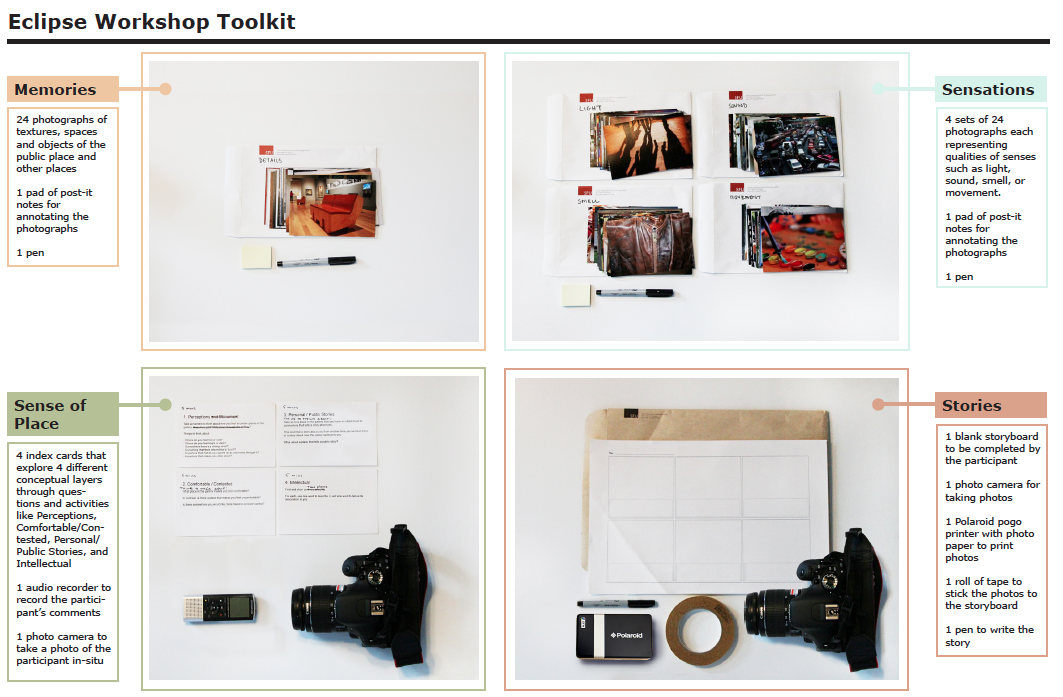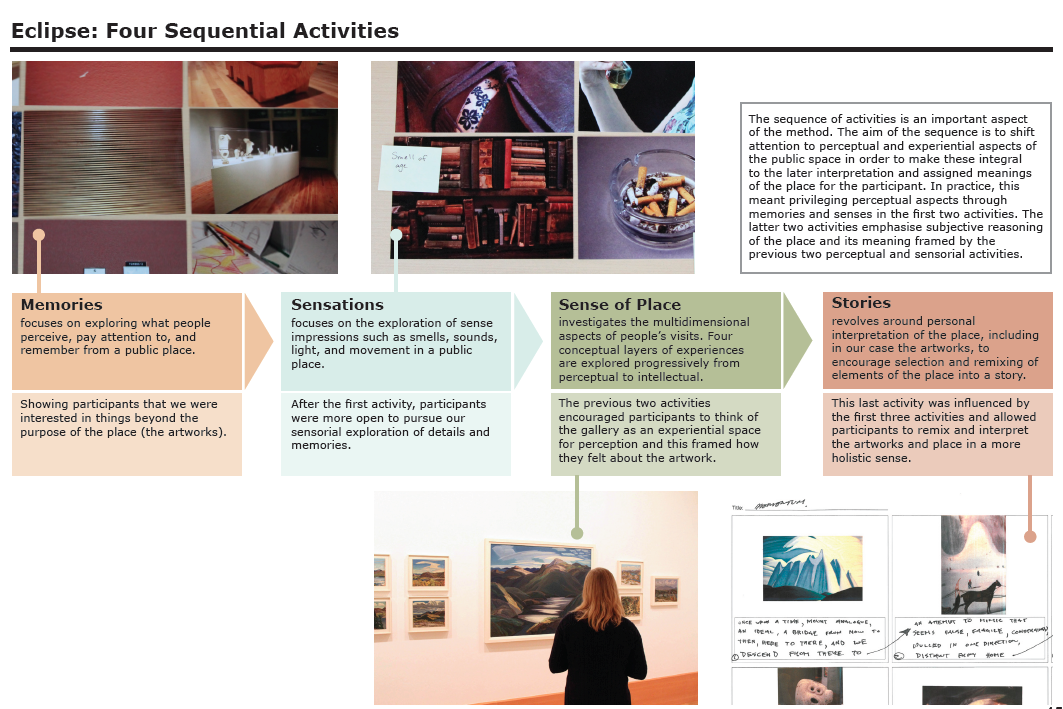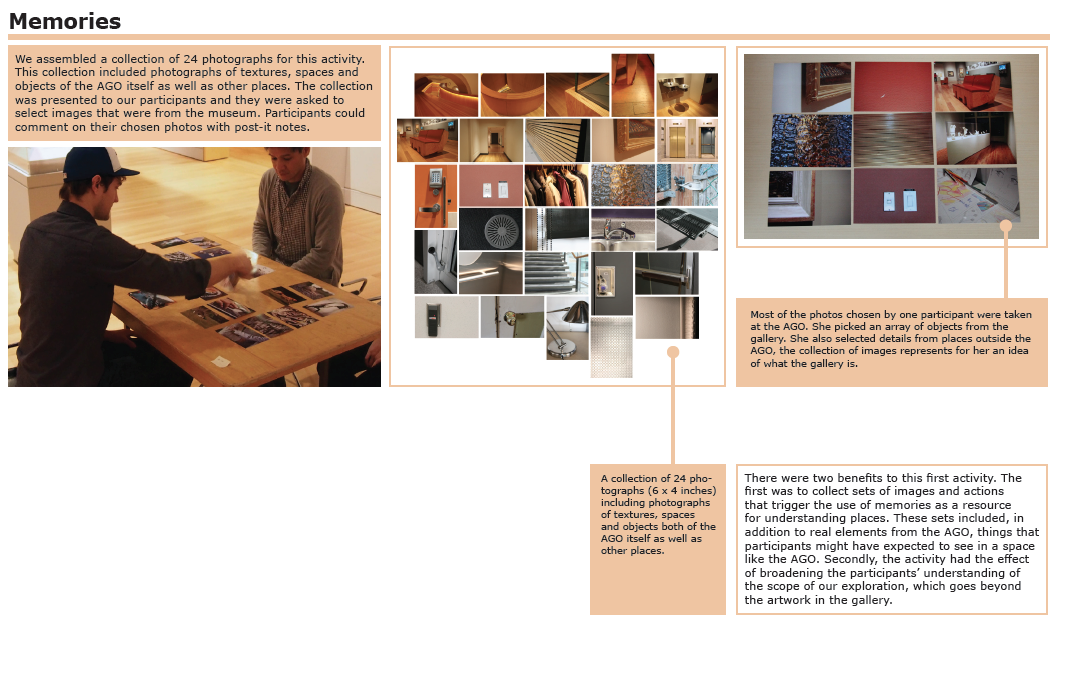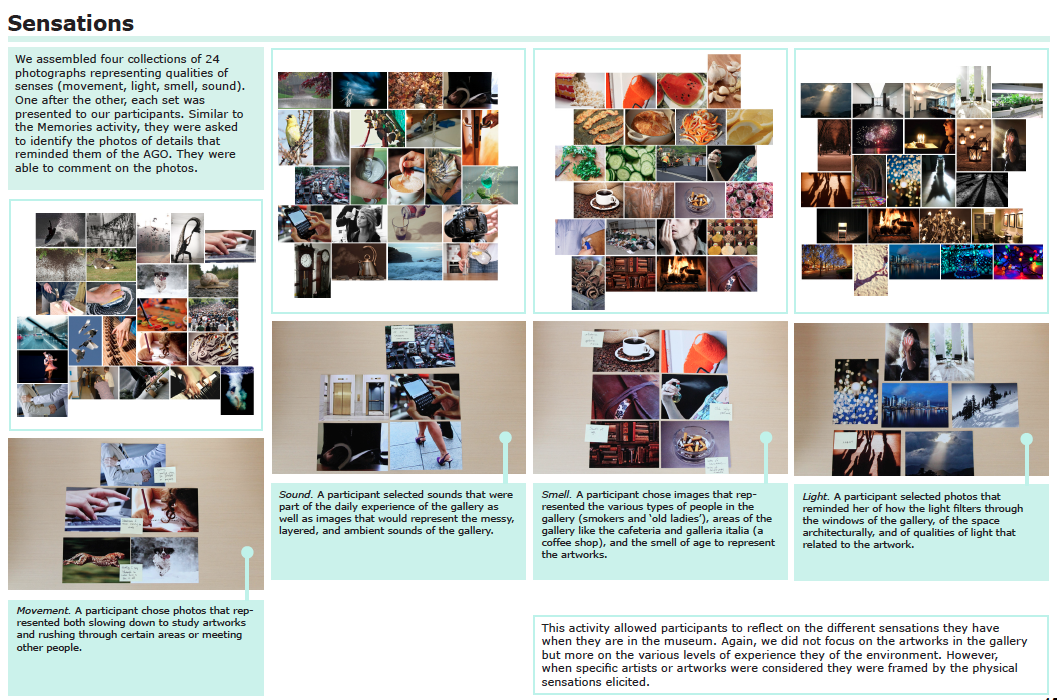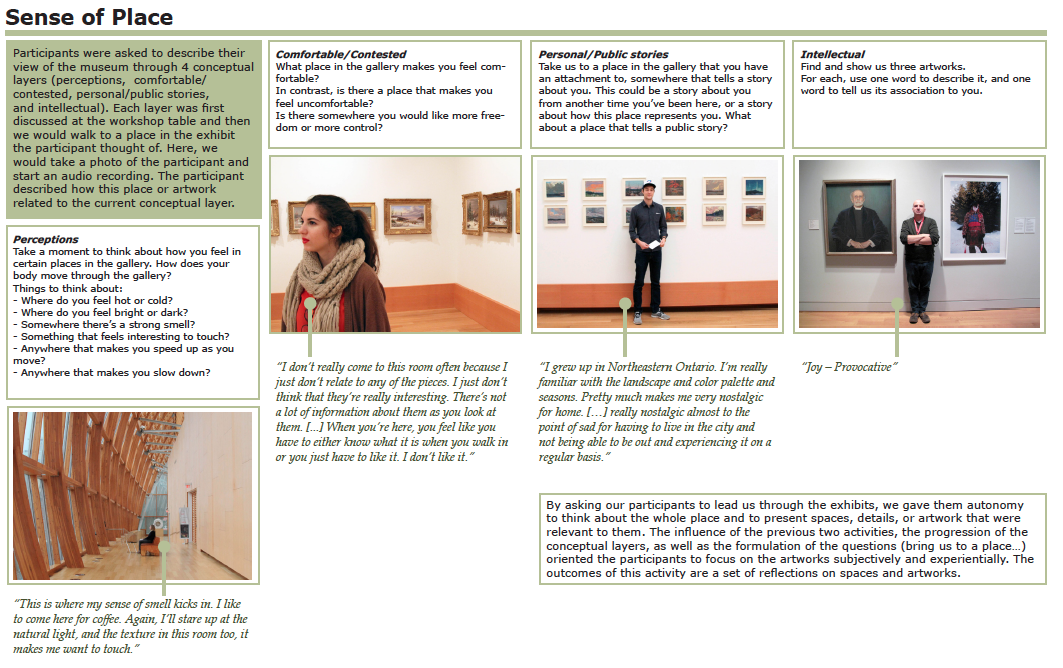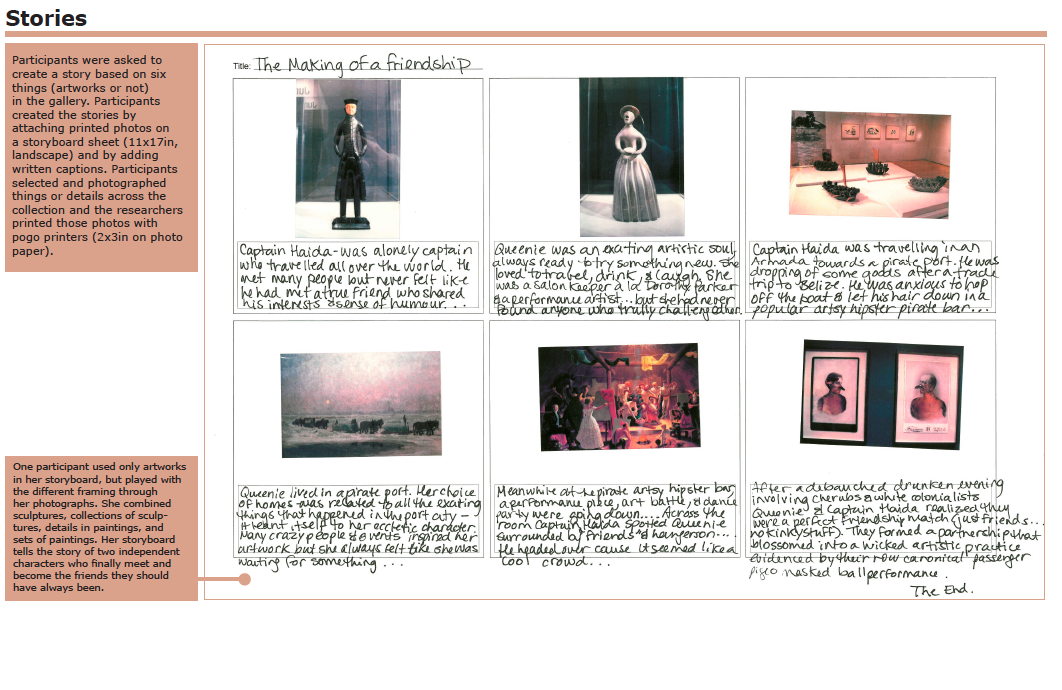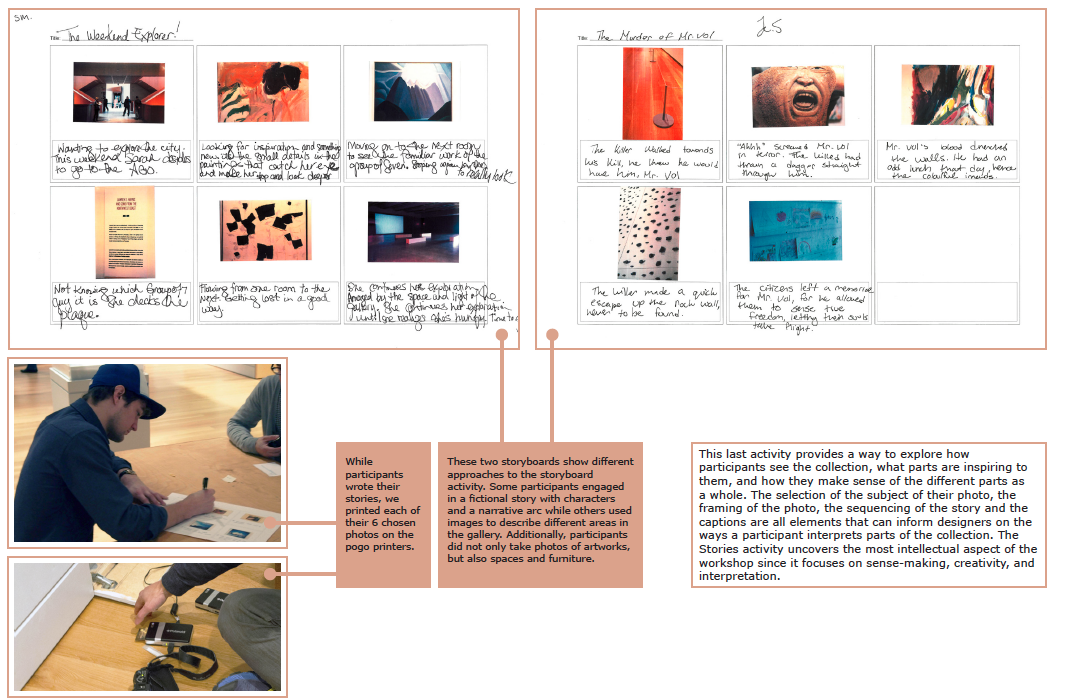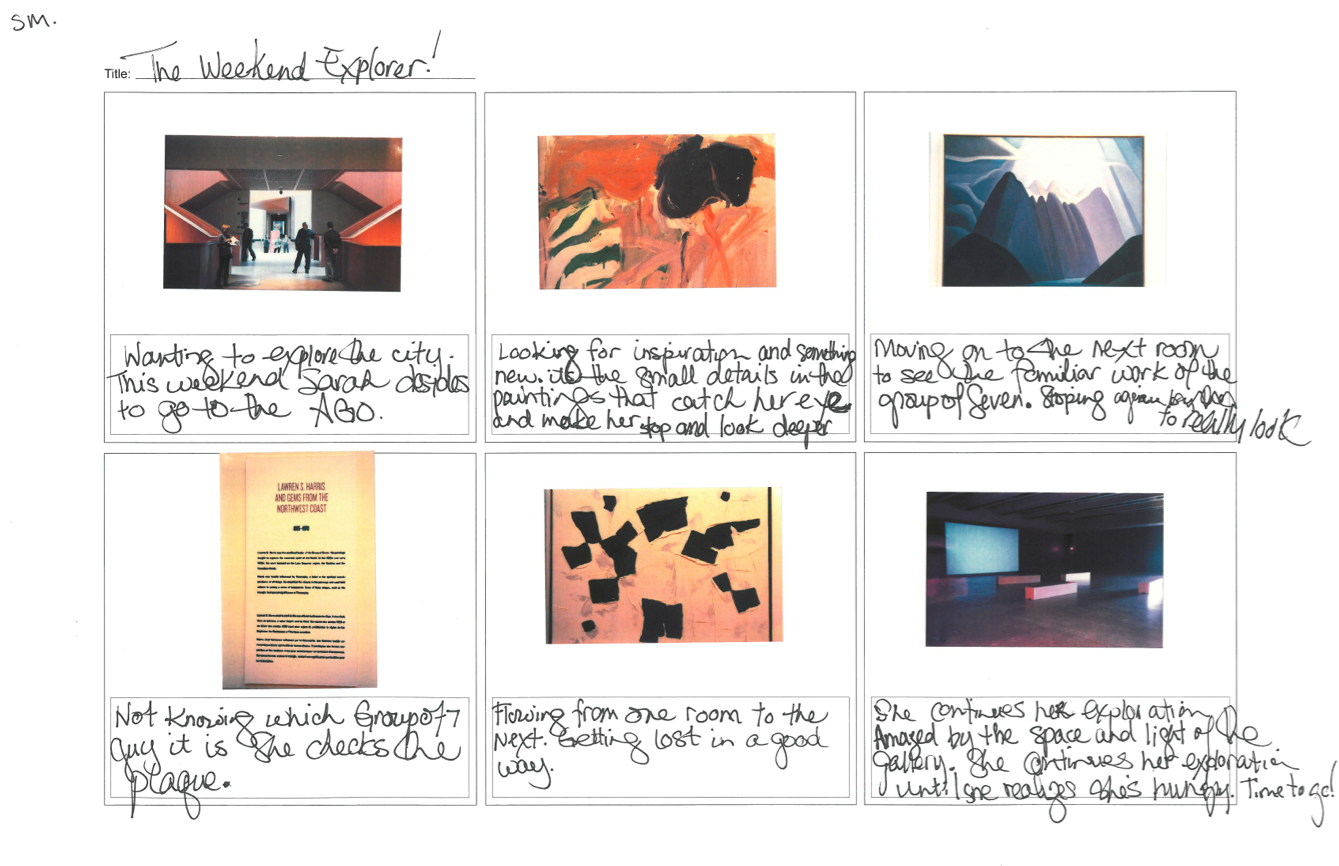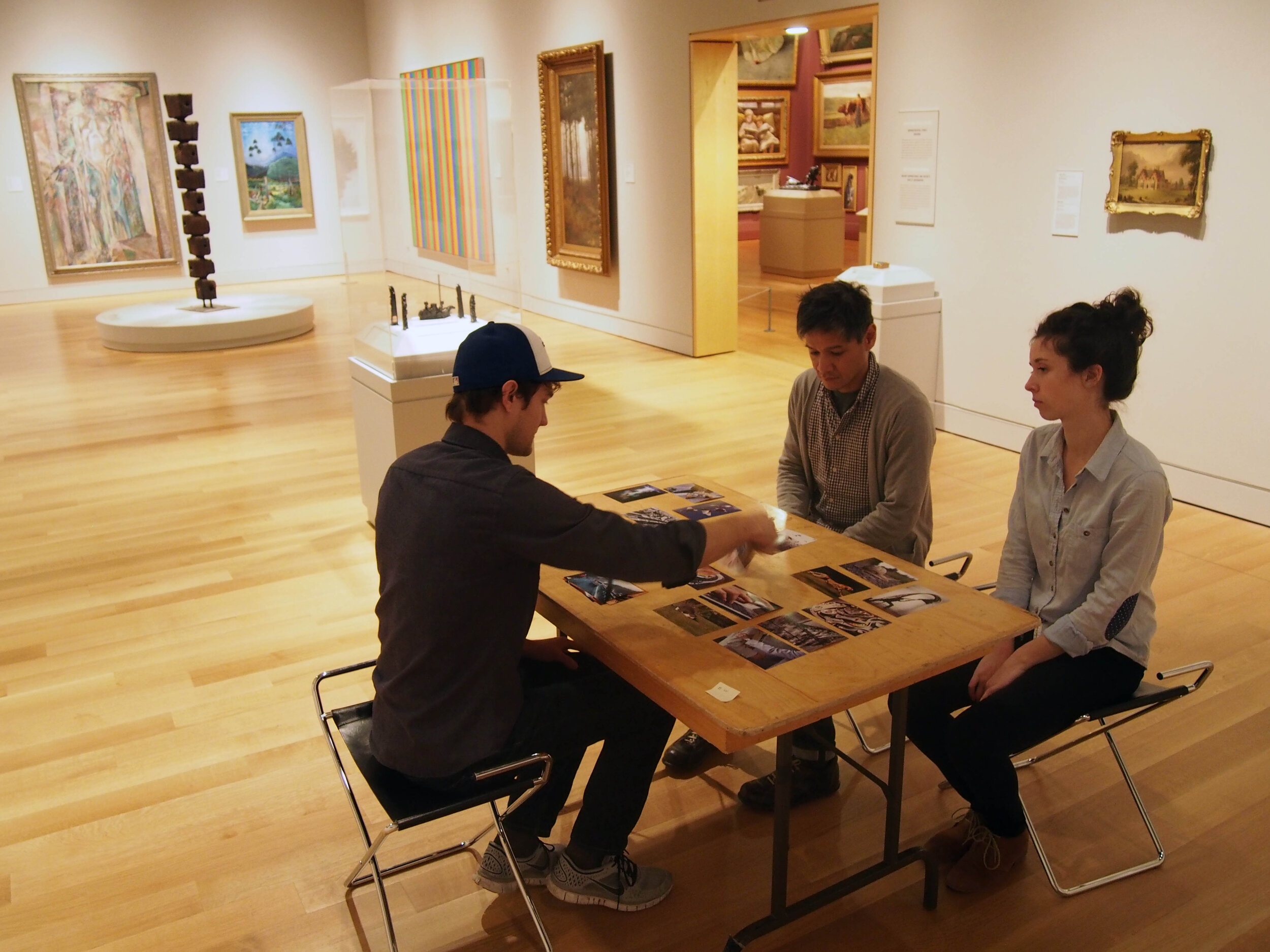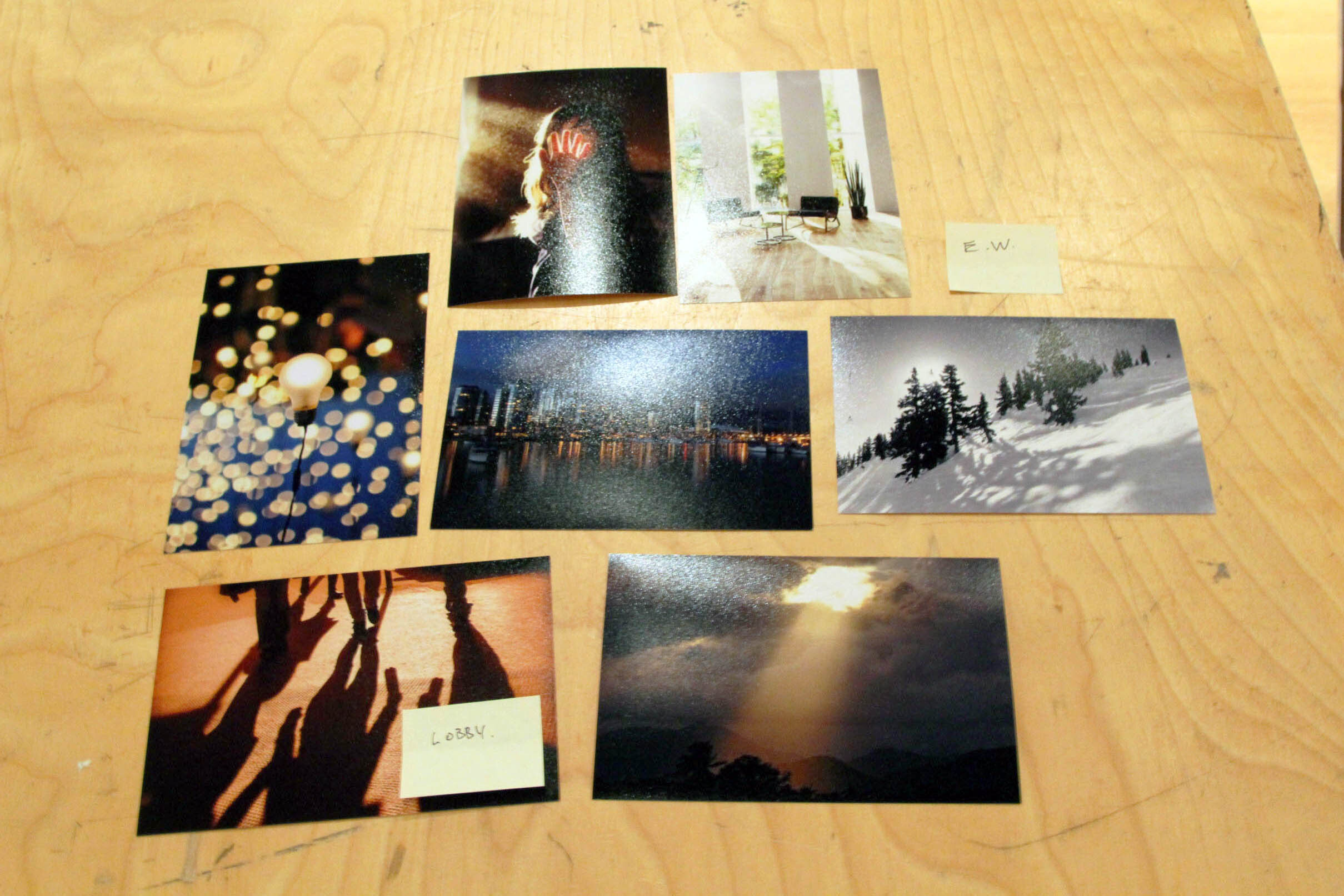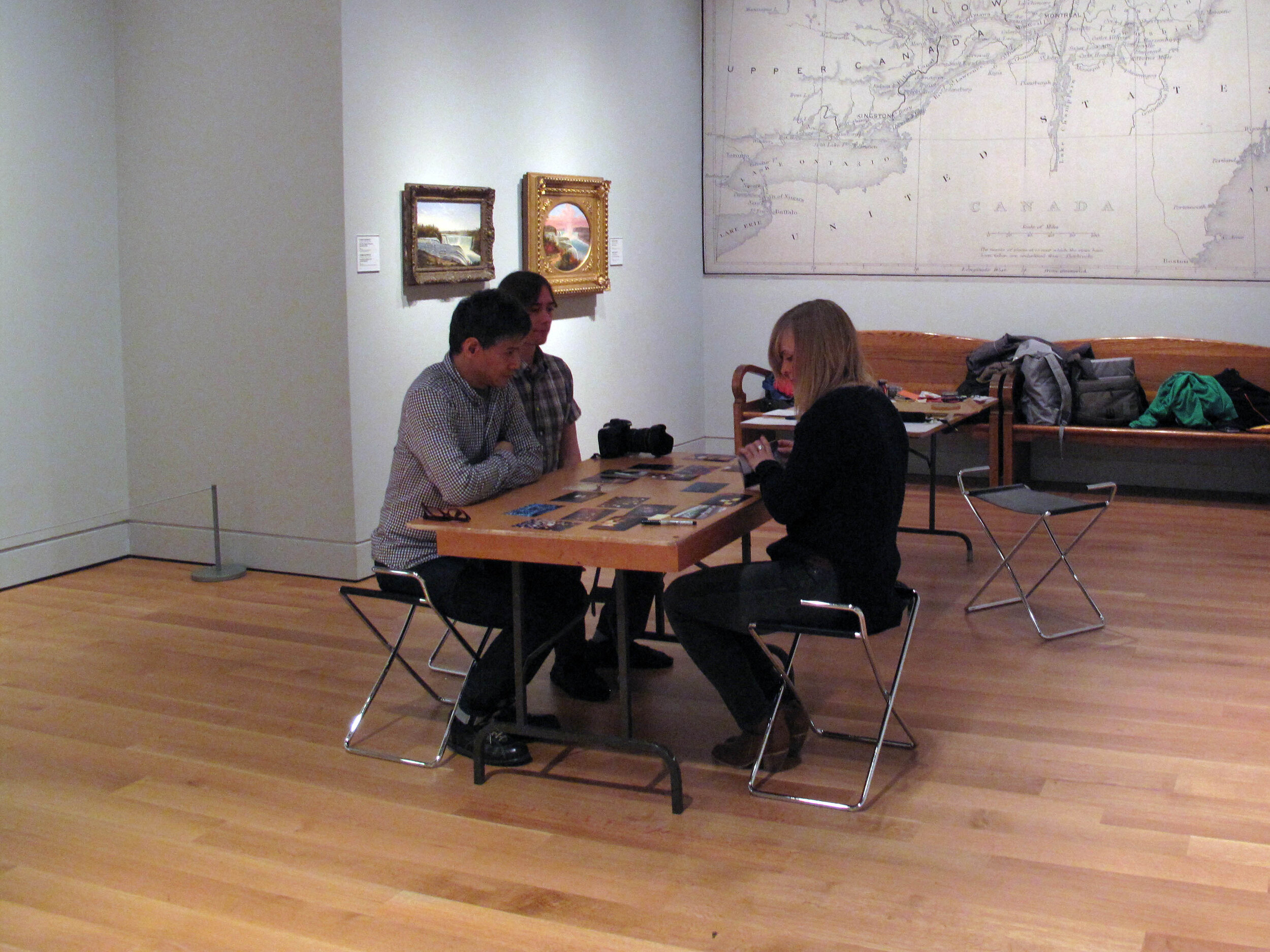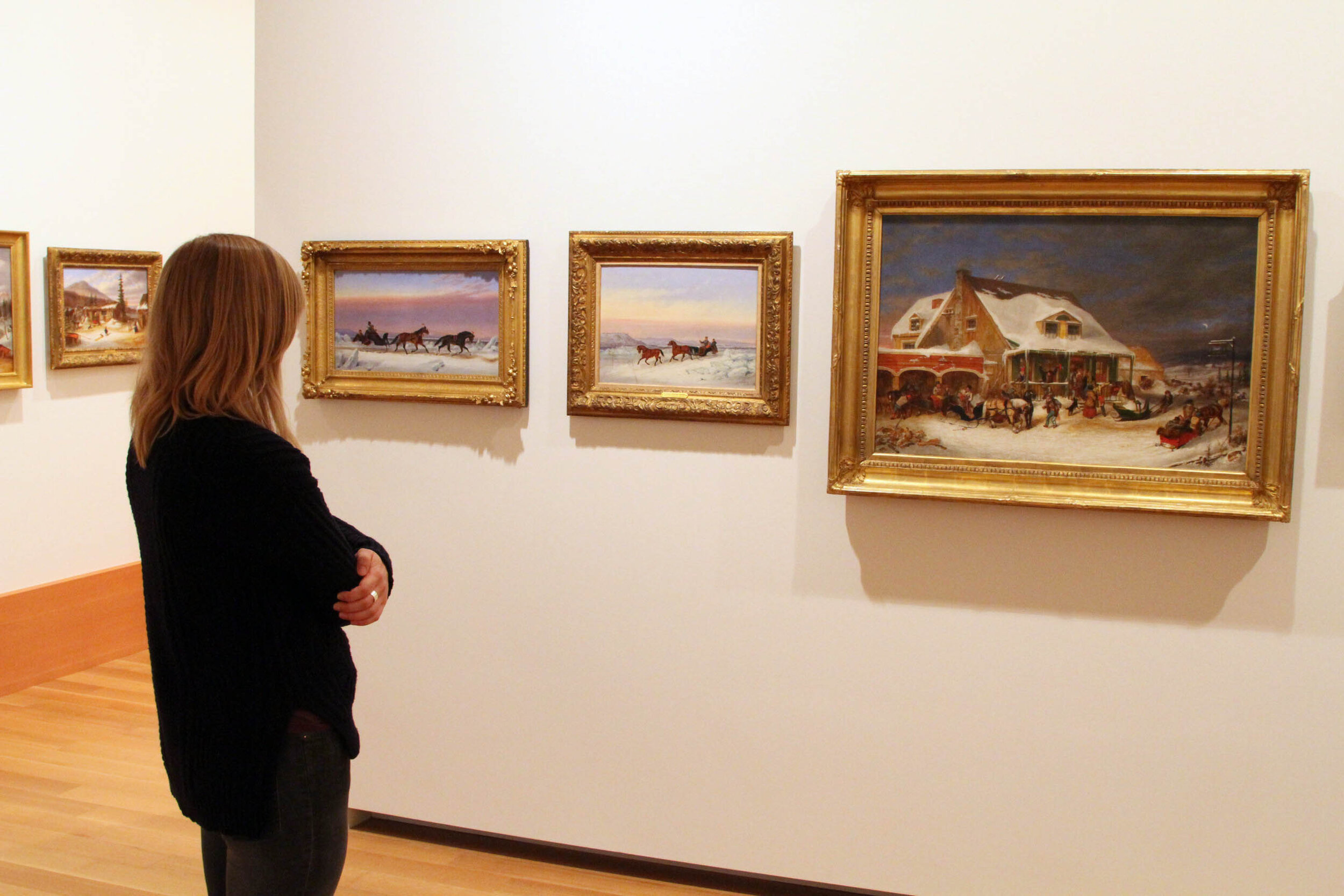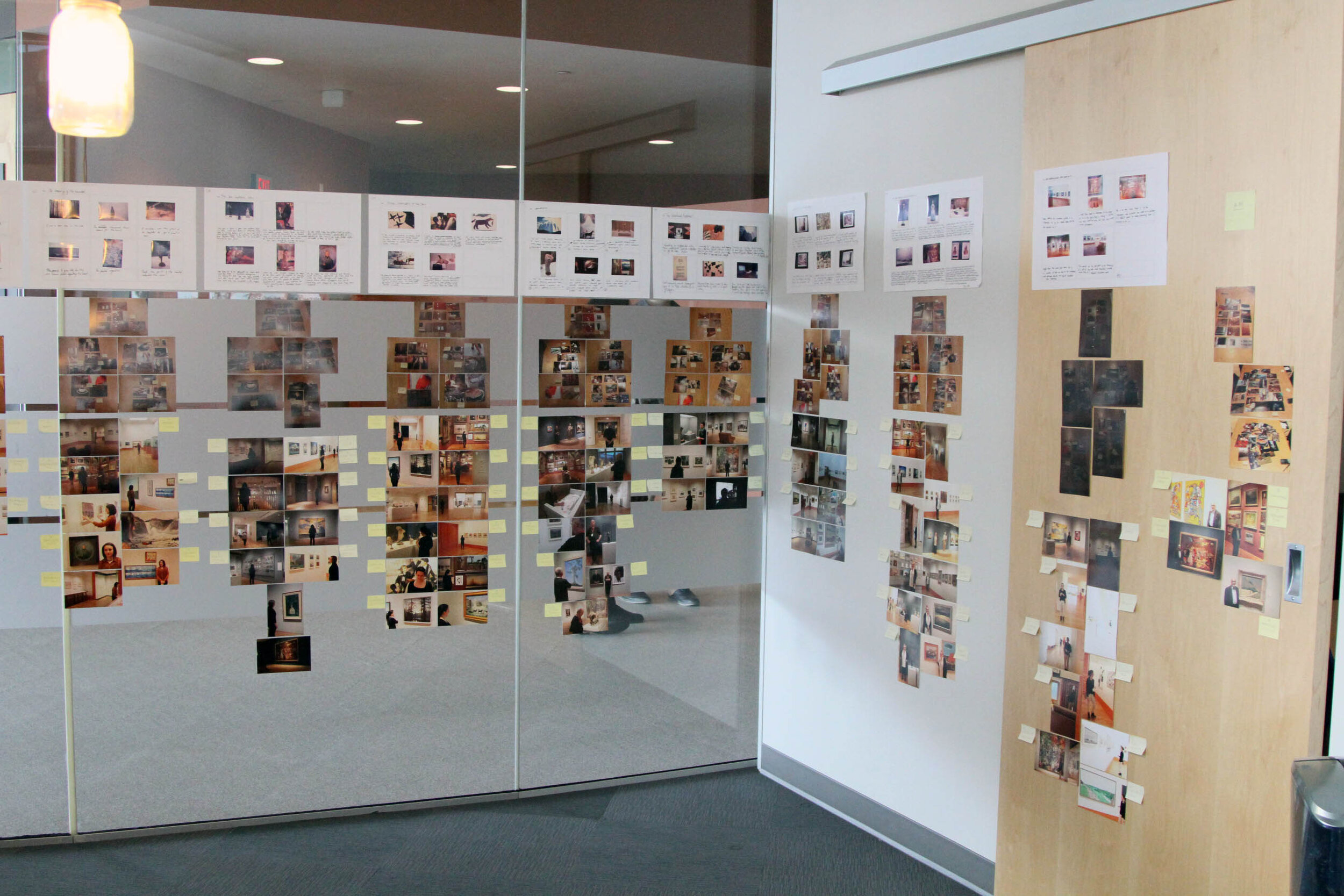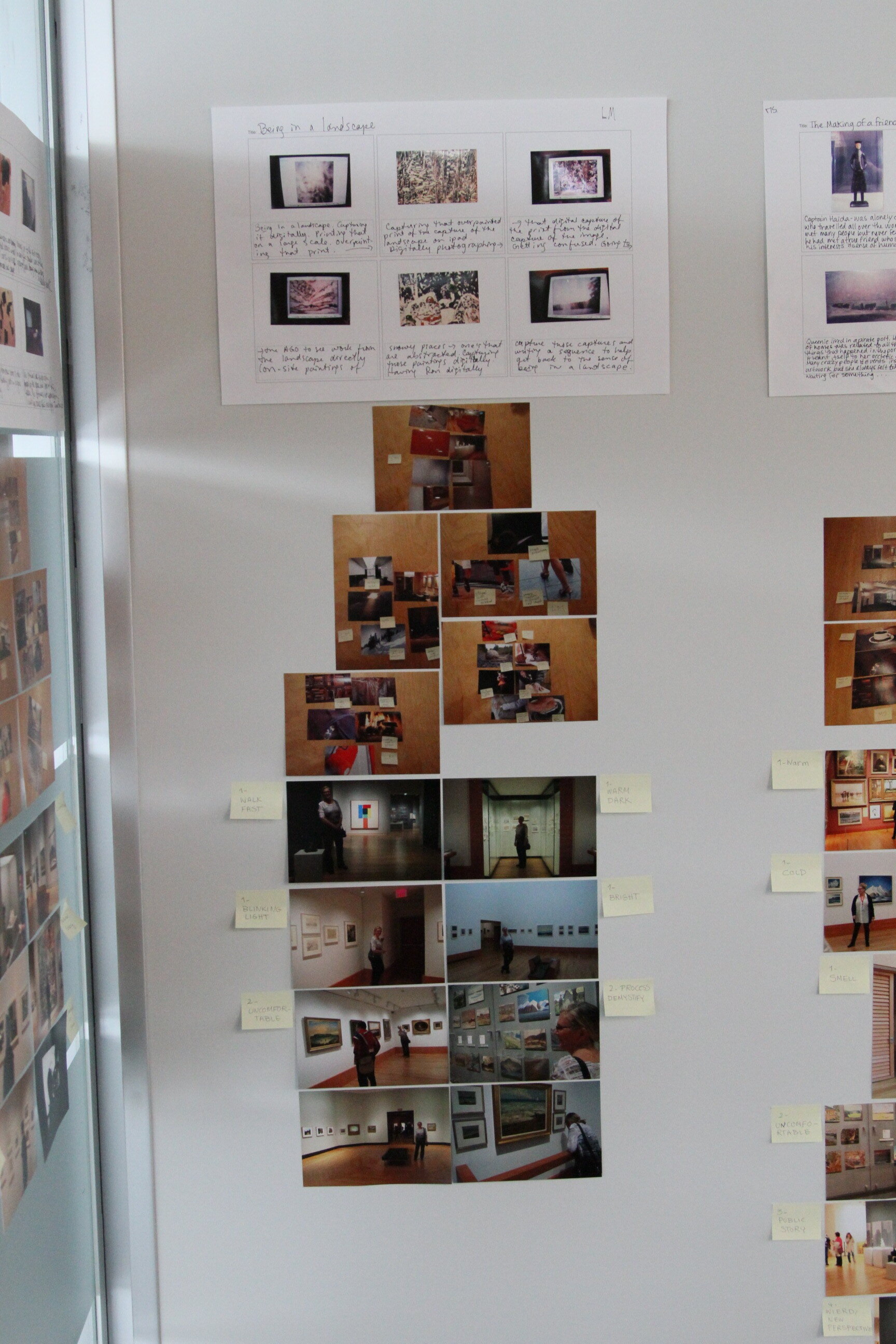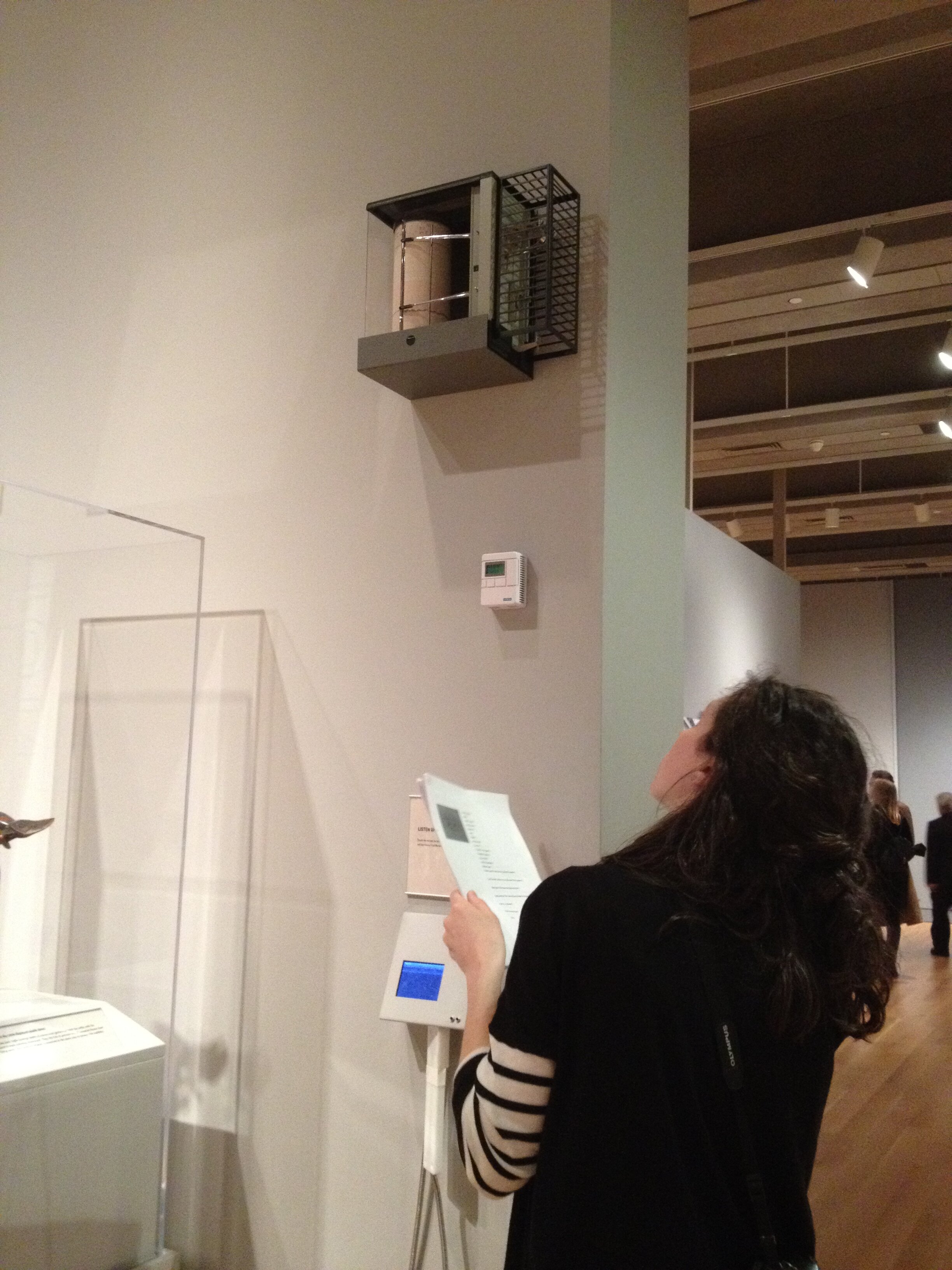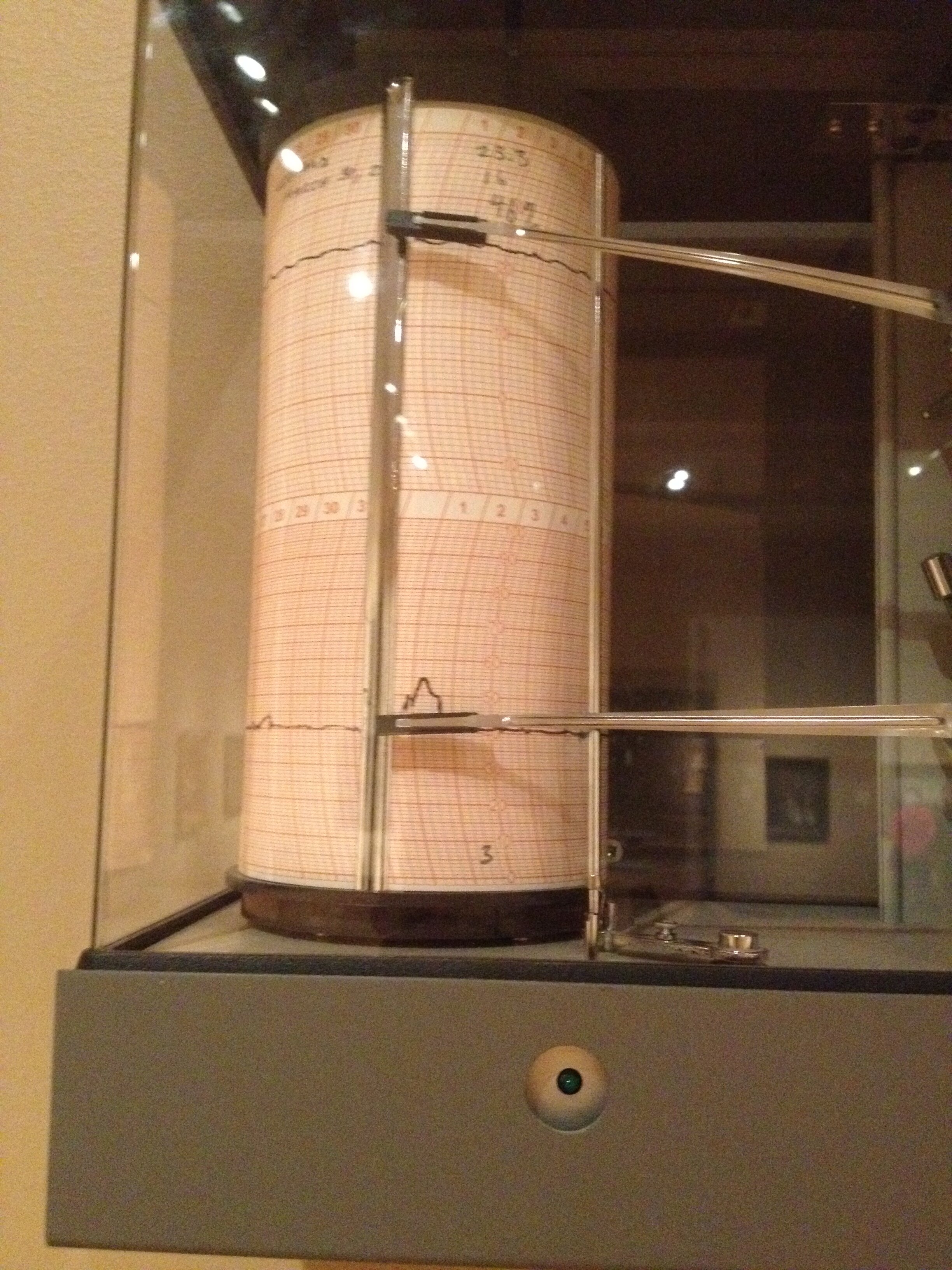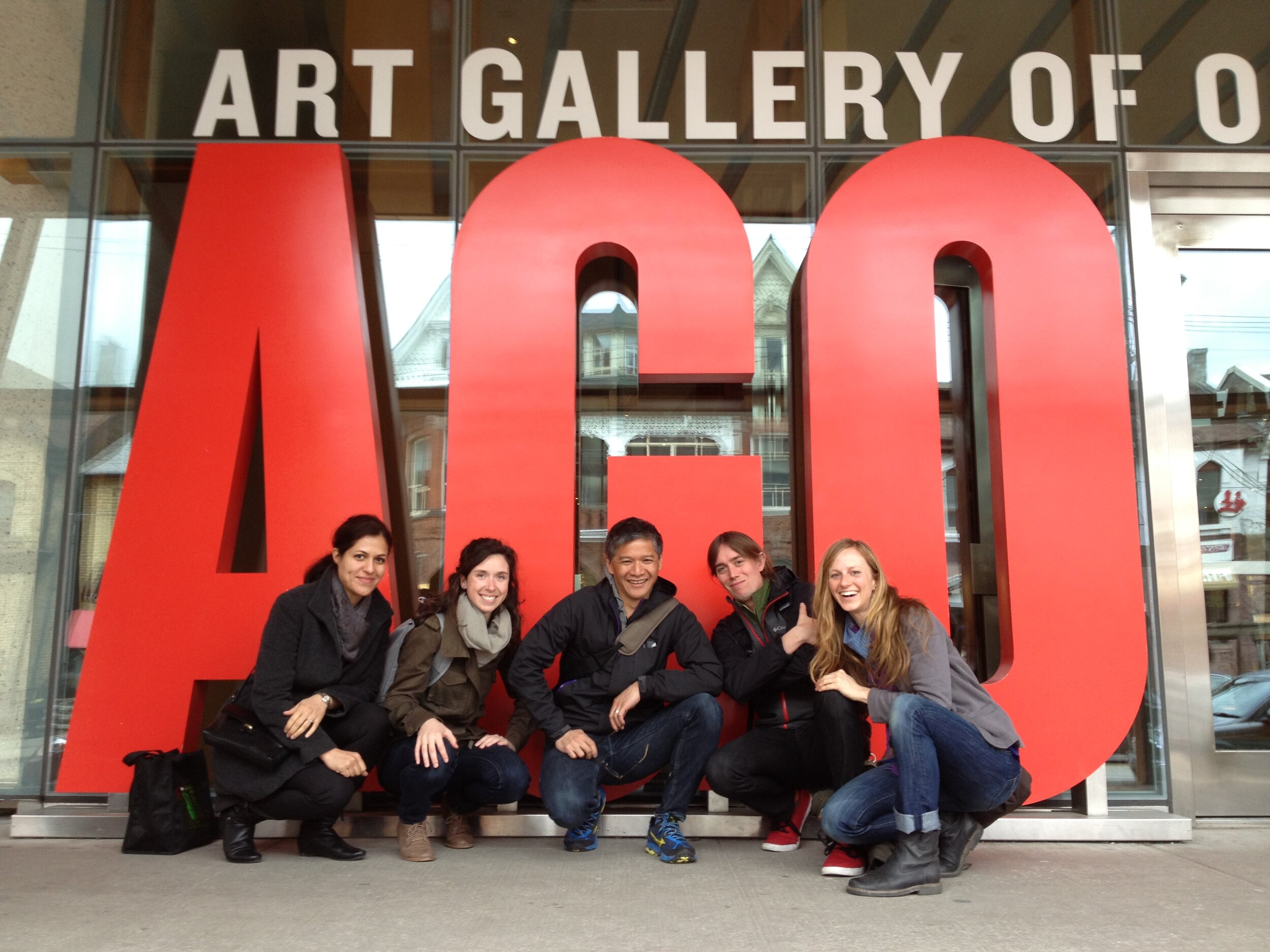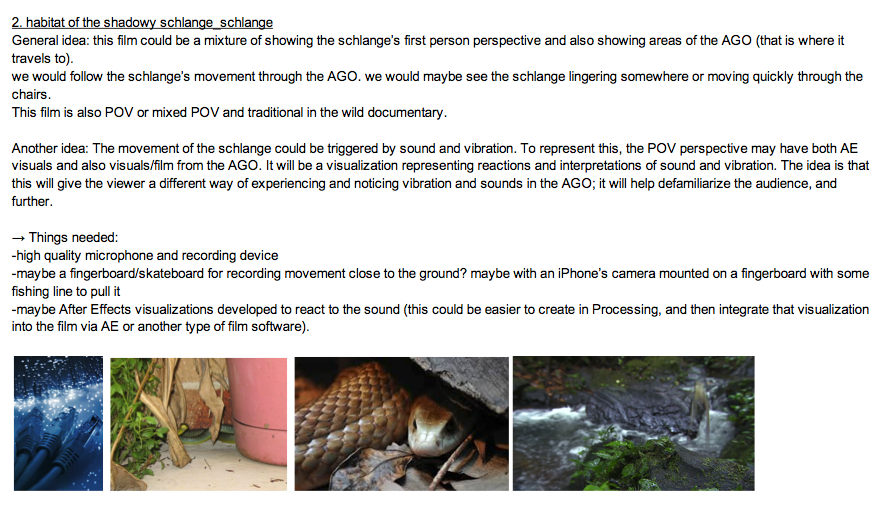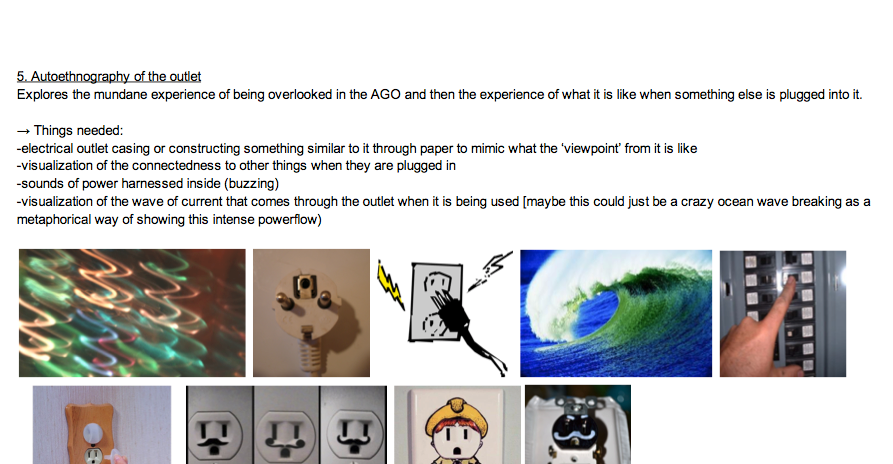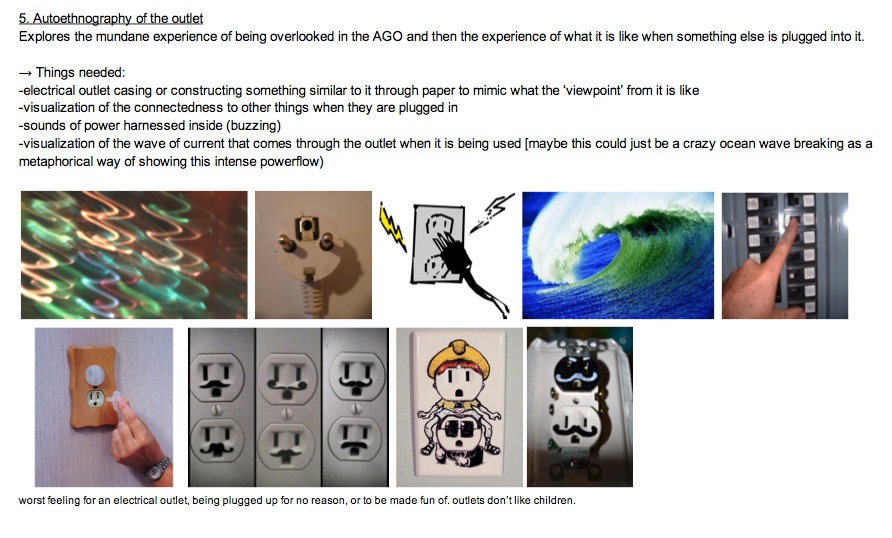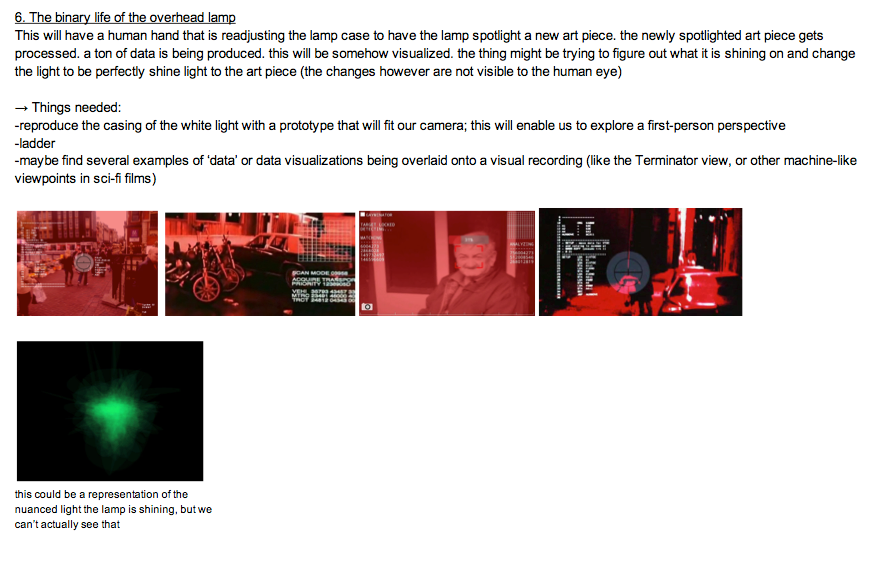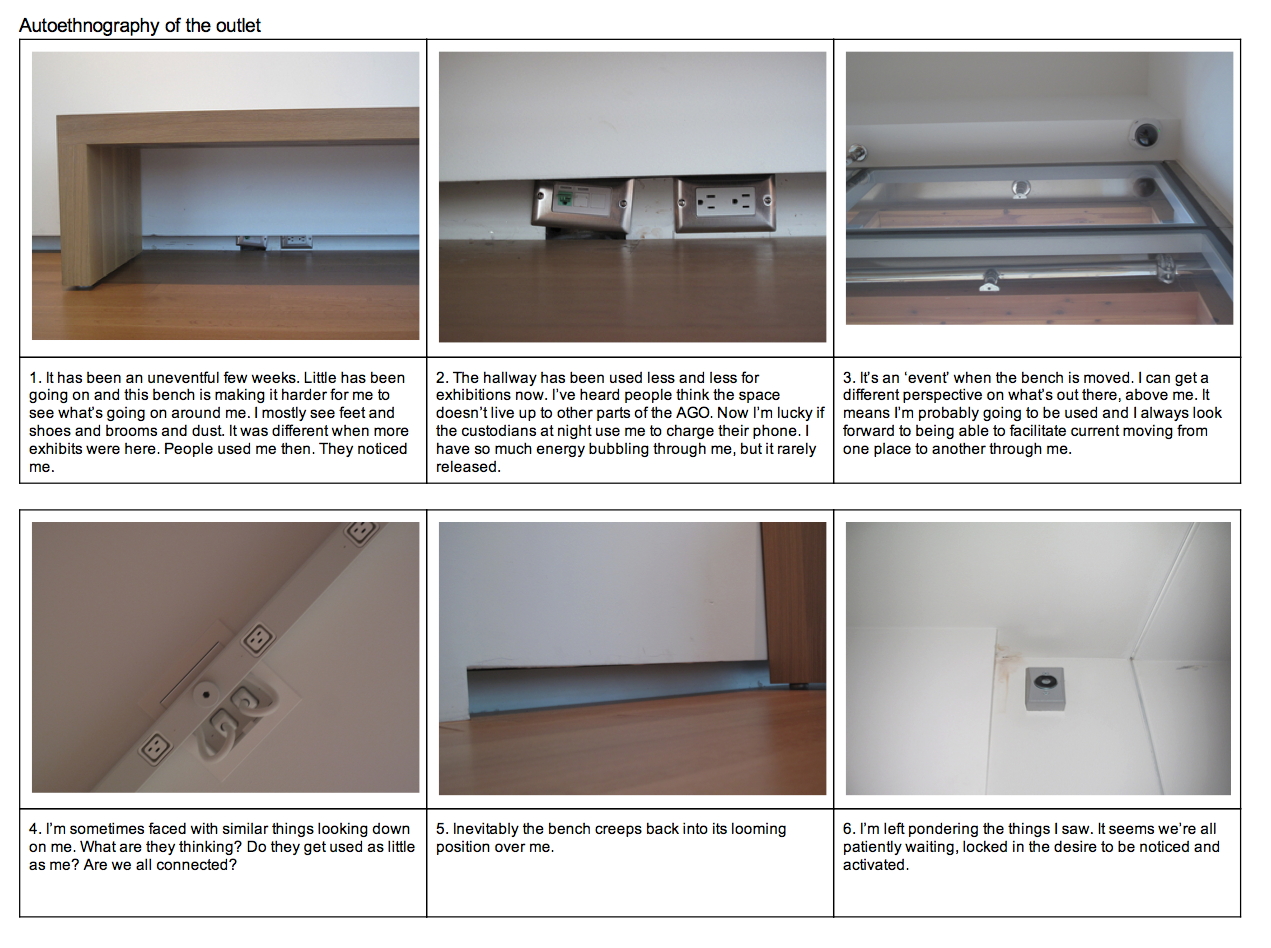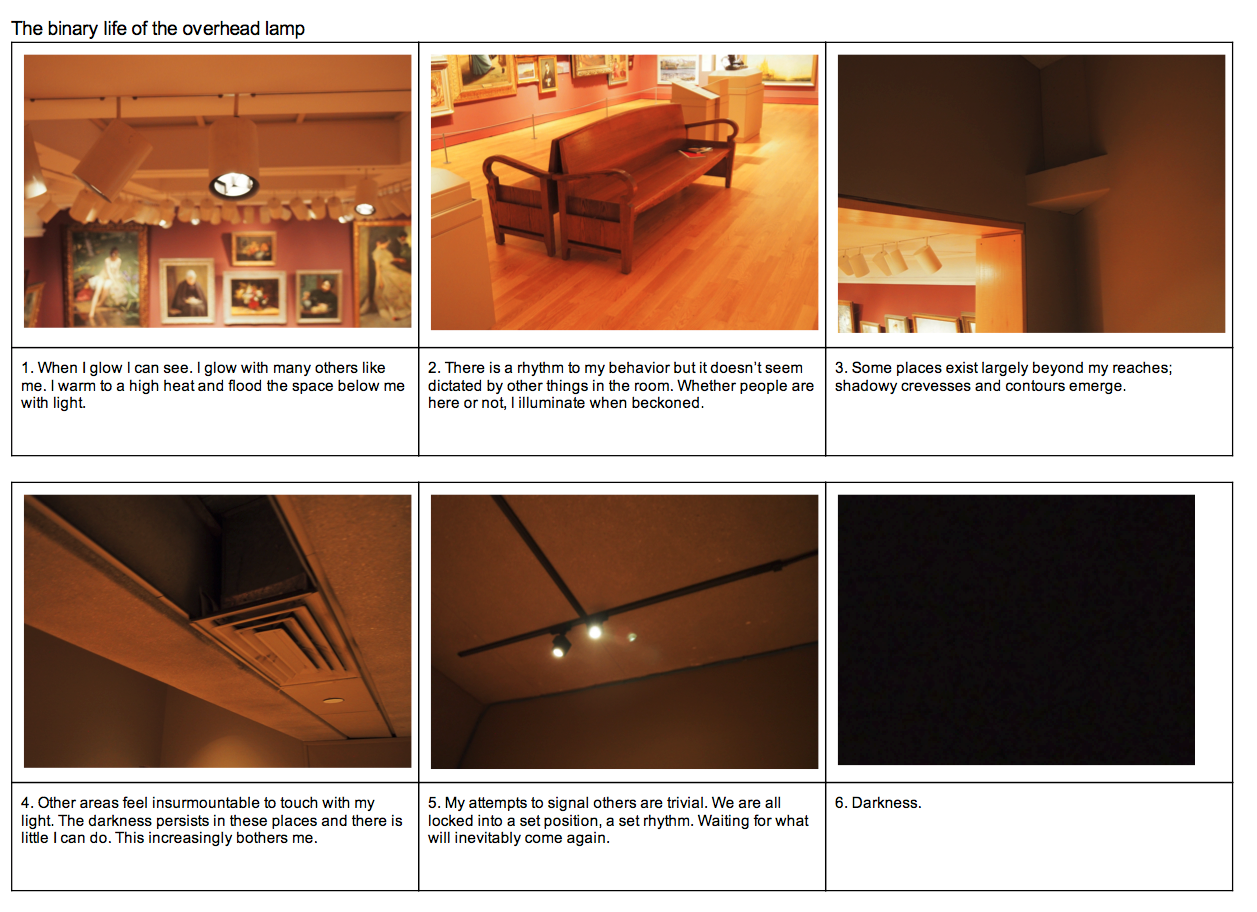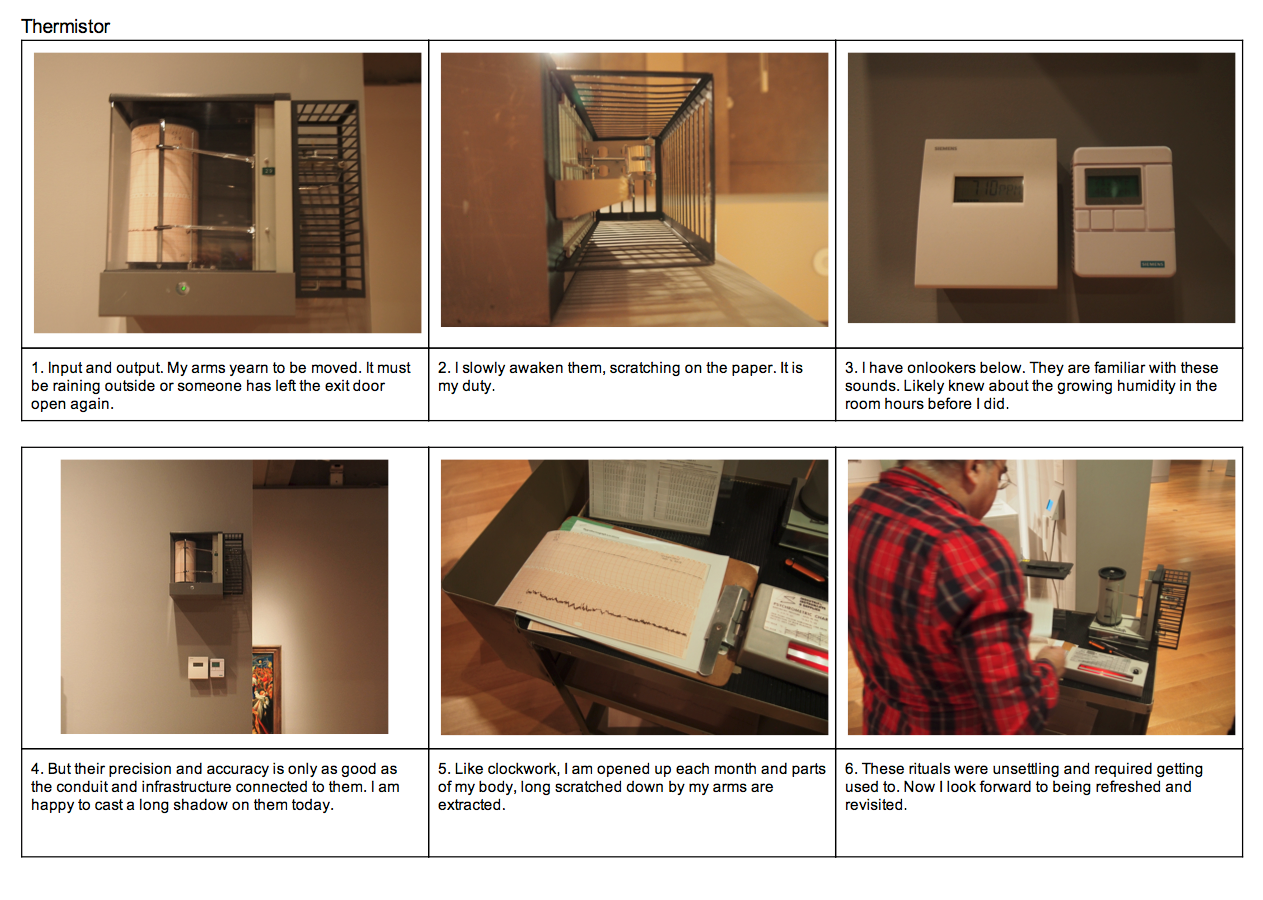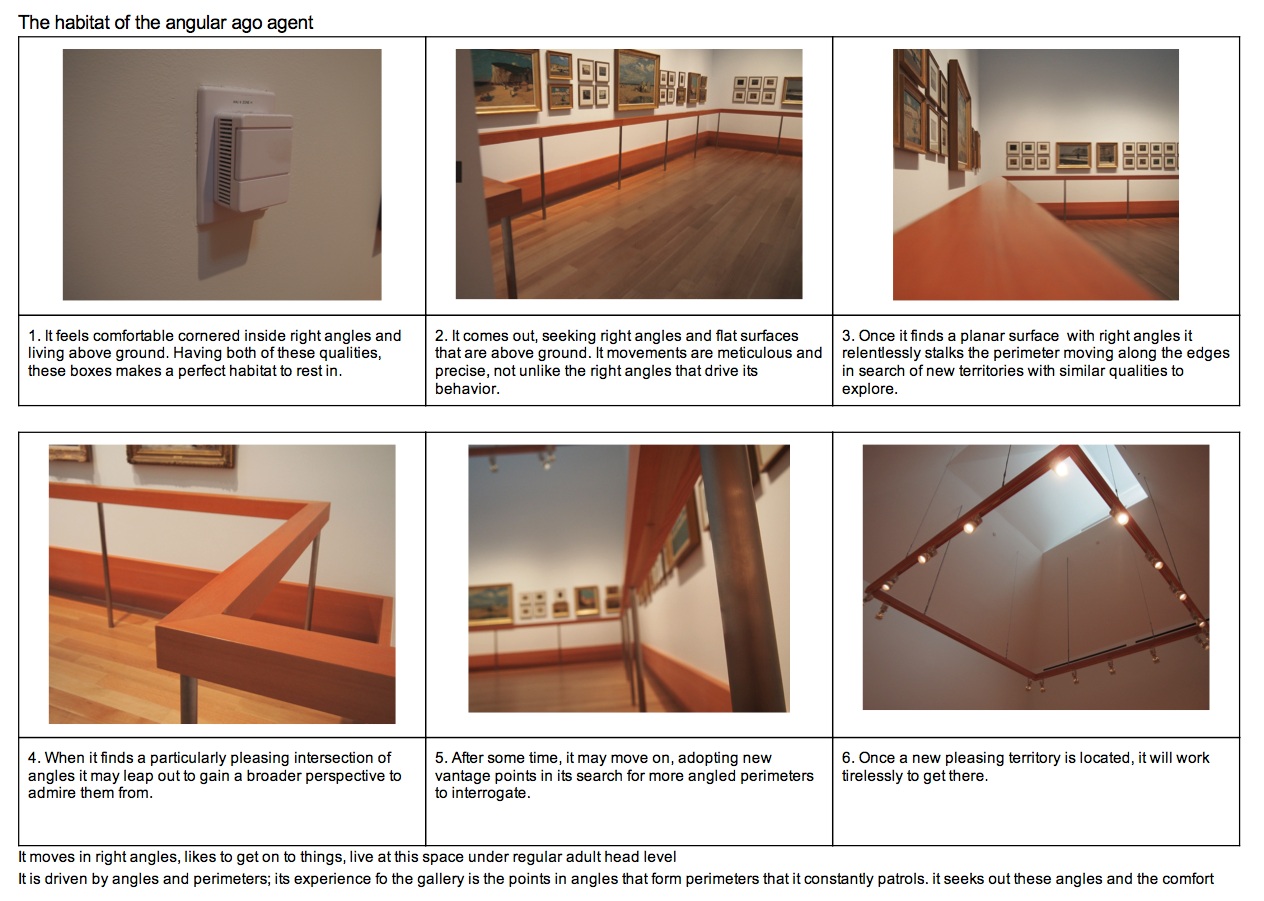Speculative Design Workshop at the AGO
Research with colleagues at Simon Fraser University (2012 - 2015)
A Design Workshop and Project with and at the Art Gallery of Ontario (AGO)
We began working on a project in collaboration with Art Gallery Ontario (AGO) in 2013. The overall longterm goal will be to design futuristic prototypes (design fictions, speculative designs) for the AGO. So far, we have visited the AGO 4 times and conducted a participants workshop at the AGO, analyzed parts of the workshop data and have engaged in a first part of a rather unconventional design process.
The workshop was conducted to gather data that can stimulate and inspire the design of future prototypes known in this case as design fictions that will be presented in the AGO as a reflective installation that encourages visitors to construct their own interpretation of the Canadian collection.
Design Workshop
The core goal of this workshop (which we named Eclipse) is to shift the focus of workshop participants to the edges of their experience of a known public place. For example, our workshop aims to elicit memories of smell and qualities of light. How mundane objects like furniture, electrical outlets, motion sensors or ceiling textures influence our participants’ experiences of place. How these qualities shape the memories, perceptual experiences, and public and personal stories that people bring to or create within a public place. Our workshop guides the participants to sequentially explore their memories, sensations, sense of place, and stories.
We published a pictorial, in which we explain this workshop we held at the AGO in its Canadian Art Collection with 13 participants.
Wakkary, R., Desjardins, A., Odom, W., Hauser, S., & Aflatoony, L., (2014). Eclipse: eliciting the subjective qualities of public places. In Proc. of the 2014 conference on Designing interactive systems (DIS 14). ACM, NY, pp. 151-160. (10pgs, Pictorial). [PDF]
Next Phase in the Design Process
For our last visit, I and another team member prepared Non-human storyboards telling the story of something non-human living at the AGO. With those storyboards we began filming footage for short films about those things. A rather unconventional but very interesting and fun process.
Community and Practices of Skateboarding
Doctoral Research at Simon Fraser University (2012 - 2015)
DESIGN FICTION AND SPECULATIVE DESIGN – SFU, AGO
Simon Fraser University, SIAT, Everyday Design Studio
I’ve been interested in Design Fiction for a while and worked on several projects around the topic.
A Sustainable Design Fiction: Green Practices
In 2012 we began writing a journal article called “A Sustainable Design Fiction: Green Practices” in which we propose opportunities for designers to co-design with DIY enthusiasts, targeted as practitioners in their own right, designing toward or within a design fiction. We see design fiction as a possible means to bridge sustainable practices, interaction design, and practice-oriented design and as a source for interpretation and adaptation. Designers can take on an intermediary (or what we call hybrid) role between design fictions and sustainable DIY practices. For example, Malthus is a DIY home version of aquaponic farming (see images). It was designed by the firm Conceptual Devices. The project aims to show how to build an aquaponic farm with accessible and easy to assemble materials. In this case, the designer is not presenting a design fiction in itself, but a plausible prototype of a proximate future. Below see the published journal article and the project page about the Green DIY study. This project was done in collaboration with Ron Wakkary, Audrey Desjardins, and Leah Maestri.
See also the project page about the Green DIY study.
SFUture – A Sustainable SFU in 2065
In the Fall 2012 and Spring 2013 terms I took a class called ChangeLab and the final project of my project team was to envision and share what SFU (our University) could look like in the future, considering sustainability issues. We created a design fiction of SFU in 2065 in form of documentary-style videos from the future. There is a Youtube Channel, a tumblr blog, and a publication about this project. We had several probes that were things in our design fiction like the unscissors and the nogfobber (see images). My project partners were Audrey Desjardins, Kashif Pasta, and Mike Funergy.
See the four other fun SFUture videos HERE.
Material Speculations
The latest work around design fiction and speculative design has been an article that I wrote together with Ron Wakkary, Will Odom, Garnet Hertz, and Henry Lin. It is called ‘Material Speculations’ and we submitted a paper to the fifth decennial Aarhus Conference. More on how this submission turns out will be coming soon.
Speculative Design for the AGO
See also our project for the AGO that involves design fiction.
The featured image of this article from HERE.
